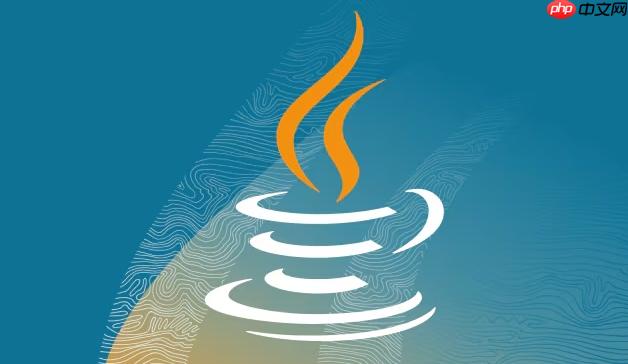线程池任务异常需通过正确方式处理以避免静默丢失。使用execute提交时,应设置UncaughtExceptionHandler捕获异常;submit提交则需调用Future.get()触发异常并捕获ExecutionException;可包装Runnable统一处理异常,或重写ThreadPoolExecutor的afterExecute方法全局监控。推荐优先使用submit结合get()主动捕获,确保异常可见性与系统稳定性。

在Java中,线程池任务抛出异常时,默认情况下可能不会被及时发现或处理,尤其是当任务通过execute()提交且未显式捕获异常时。这会导致异常“静默消失”,给调试和系统稳定性带来隐患。要正确处理线程池任务中的异常,需要根据任务类型(Runnable 或 Callable)以及提交方式采取不同的策略。
1. 使用 execute 提交 Runnable 任务
当使用execute(Runnable)7>提交任务时,如果任务内部抛出未捕获的异常,JVM会调用线程的<code>UncaughtExceptionHandler。
可以通过以下方式处理:
// 设置全局未捕获异常处理器
Thread.setDefaultUncaughtExceptionHandler((t, e) -> {
System.err.println("线程 " + t.getName() + " 发生异常: " + e.getMessage());
e.printStackTrace();
});
// 或者在线程工厂中为每个线程单独设置
ExecutorService executor = Executors.newFixedThreadPool(2, r -> {
Thread t = new Thread(r);
t.setUncaughtExceptionHandler((thread, ex) -> {
System.err.println("捕获线程 " + thread.getName() + " 的异常: " + ex.getMessage());
ex.printStackTrace();
});
return t;
});
2. 使用 submit 提交任务(推荐用于异常捕获)
使用submit()方法提交任务时,异常会被封装在返回的Future对象中,必须通过调用get()来触发异常抛出,从而进行捕获。
立即学习“Java免费学习笔记(深入)”;
-
对于 Runnable 任务:异常会在
Future.get()时以ExecutionException形式抛出。
-
对于 Callable 任务:异常同样封装在
ExecutionException中,原始异常可通过getCause()获取。
ExecutorService executor = Executors.newSingleThreadExecutor();
Future> future = executor.submit(() -> {
throw new RuntimeException("任务执行失败");
});
try {
future.get(); // 必须调用 get() 才能感知异常
} catch (ExecutionException e) {
Throwable cause = e.getCause();
System.err.println("任务异常: " + cause.getMessage());
} catch (InterruptedException e) {
Thread.currentThread().interrupt();
}
3. 包装 Runnable 任务进行统一异常处理
可以自定义一个包装类,在run()中捕获异常并统一处理,避免遗漏。
public class ExceptionHandlingRunnable implements Runnable {
private final Runnable task;
public ExceptionHandlingRunnable(Runnable task) {
this.task = task;
}
@Override
public void run() {
try {
task.run();
} catch (Exception e) {
System.err.println("任务执行中发生异常: " + e.getMessage());
e.printStackTrace();
// 可记录日志、发送告警等
}
}
}
// 使用示例
executor.execute(new ExceptionHandlingRunnable(() -> {
throw new RuntimeException("测试异常");
}));
4. 重写线程池的 afterExecute 方法(高级用法)
通过继承ThreadPoolExecutor并重写afterExecute(Runnable, Throwable)方法,可以在任务执行后统一处理异常。
ThreadPoolExecutor executor = new ThreadPoolExecutor(
2, 4, 60L, TimeUnit.SECONDS, new LinkedBlockingQueue()) {
@Override
protected void afterExecute(Runnable r, Throwable t) {
super.afterExecute(r, t);
if (t != null) {
System.err.println("afterExecute 捕获异常: " + t.getMessage());
t.printStackTrace();
}
}
};
注意:afterExecute仅在任务因异常终止时才会接收到非null的t参数,适用于execute和submit提交的任务(需结合其他机制)。
基本上就这些。关键是根据使用场景选择合适的方式:优先使用
submit + Future.get()来主动捕获异常,或通过统一包装和异常处理器确保异常不被忽略。
以上就是在Java中如何处理线程池任务抛出的异常的详细内容,更多请关注php中文网其它相关文章!


